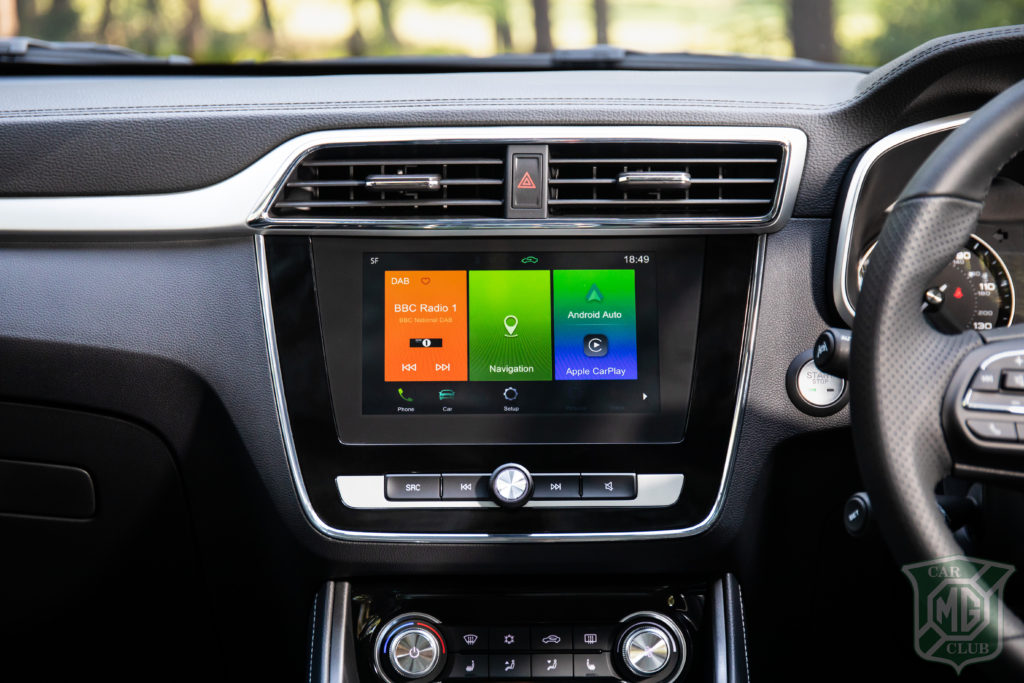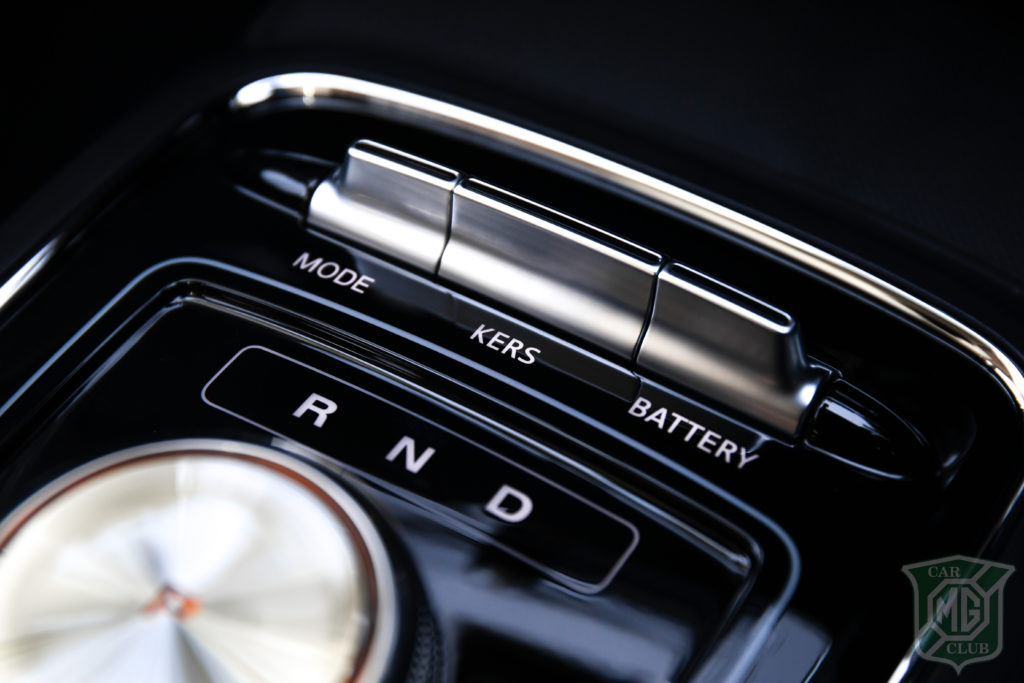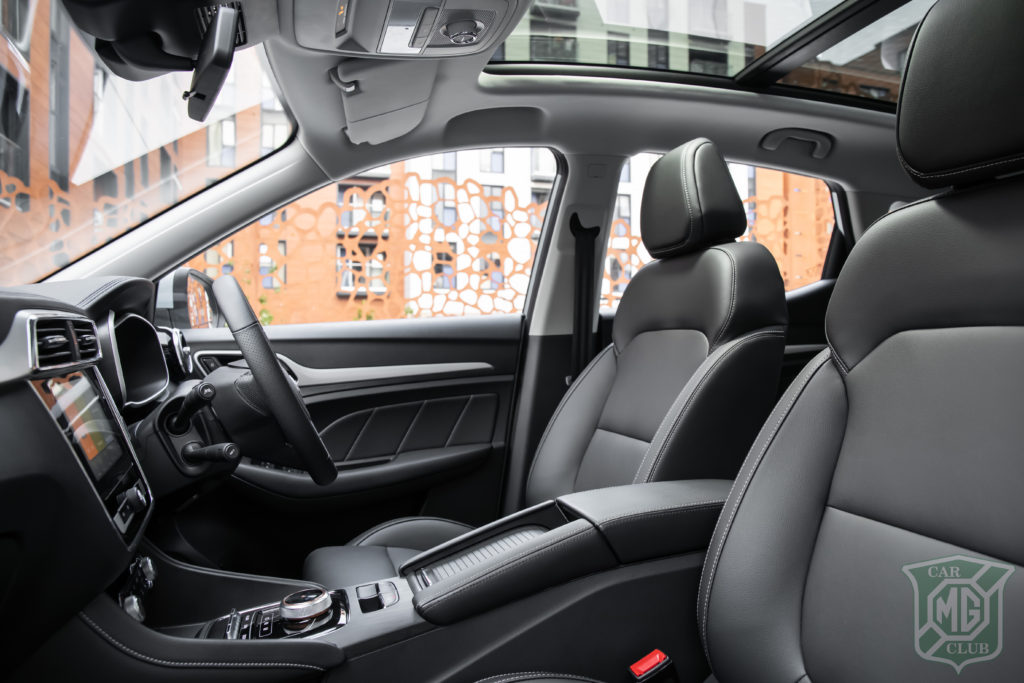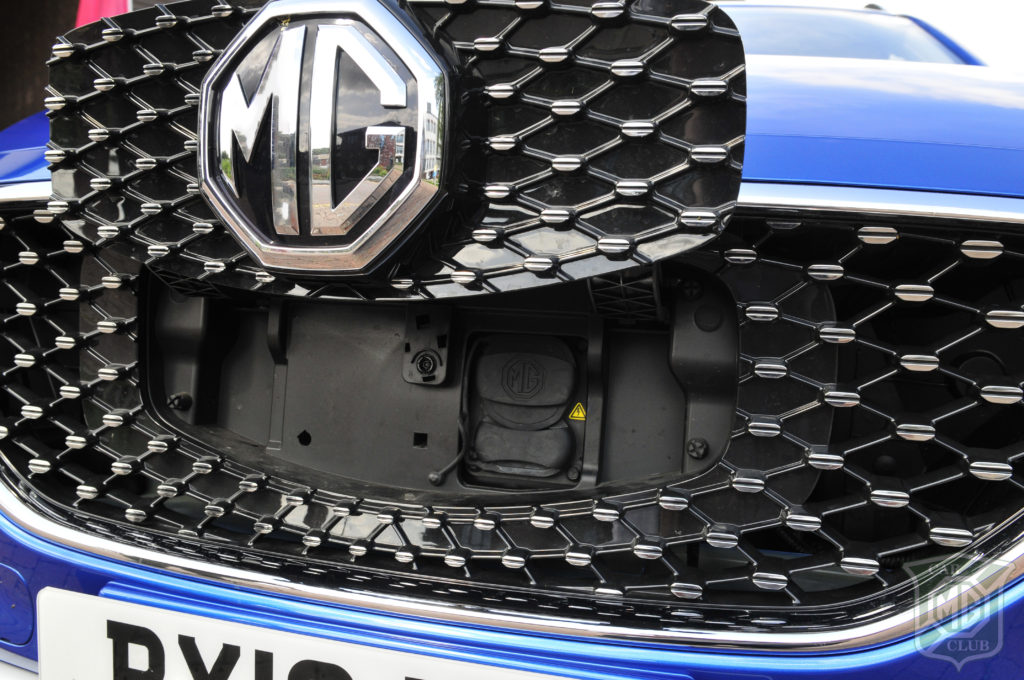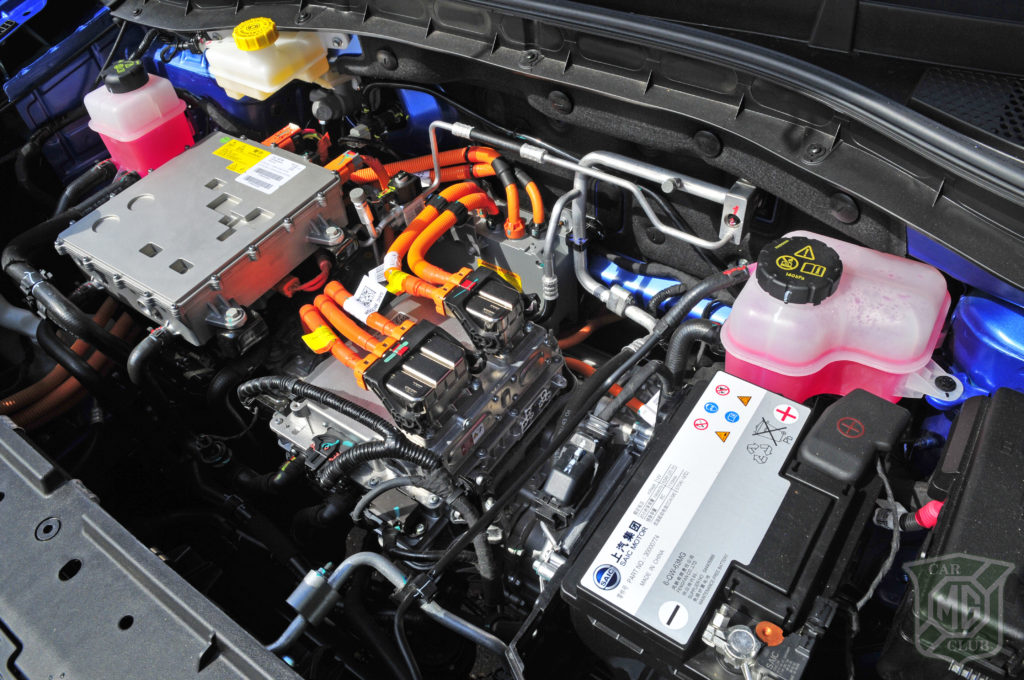Electric Avenue
By Andy Knott
Having owned an MG ZS 1.0 Exclusive for 18 months, I was intrigued to see how the new electric version would drive and compare to its combustion-engined sibling.
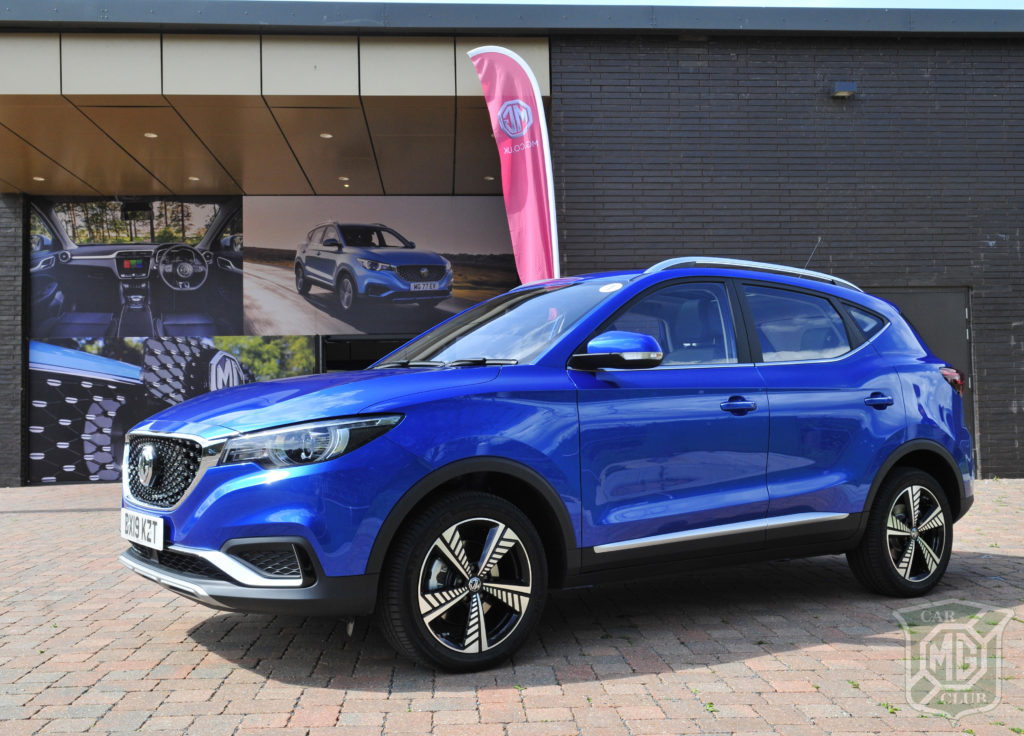
Ever since trying the ZS on the press launch back in 2017, I thought it was a very capable SUV, with a great support and finance package surrounding it, and after a brief discussion with my wife the decision was taken to trade in our MG3 for a brand new ZS. And so, in January 2018 we became proud owners of a Laser Blue MG ZS Exclusive, fitted with the one-litre automatic three-cylinder engine.
Since then we’ve had 18 trouble-free months of enjoyable motoring in the ZS, as it’s carted the family here and there, and with two boys (11 and 7) the interior has been subjected to all sorts of grubby, muddy clothes and sticky, gooey food items and performed admirably. We had no intention of changing it… that is until my wife got talking to a friend with an electric vehicle, and then she noticed the publicity and rave reviews of the all-new MG ZS EV.
“The dials lit up and the needles swept, the radio, etc, sprang into life and then…silence.”
Driving…
I was fortunate enough to experience one of the top-of-the-range (Exclusive) MG ZS EVs recently. The first noticeable thing was the keyless entry on the ZS EV, as opposed to the standard flip-out key on the petrol versions. Once inside the ZS, I put the keyless fob on the tray under the infotainment system, applied the footbrake and hit the start button. The dials lit up and the needles swept, the radio, etc, sprang into life and then…silence.
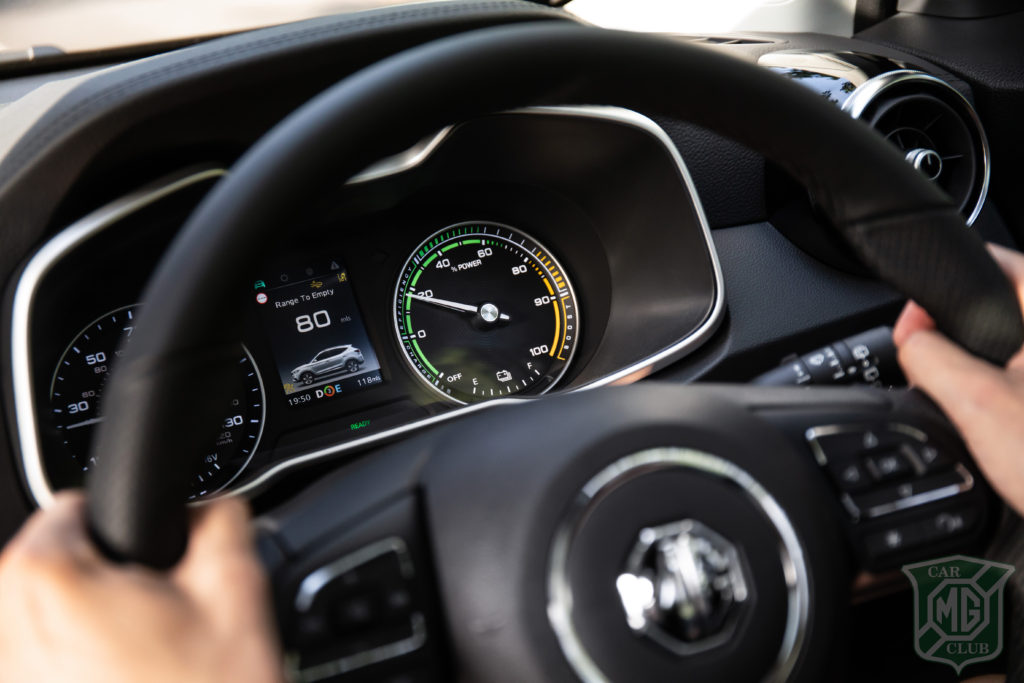
It’s a strange sensation when you’re used to a combustion engine bursting into life. The ZS EV has three different modes, Eco, Normal and Sport. I switched the gear selector to D and decided to set off in the Normal mode, the combined range being 163 miles according to official figures. Easing my foot on the accelerator the ZS released the electronic handbrake and moved off silently.
Once up to speed the driving experience is very reminiscent of the 1.0 petrol engine version, the road and tyre noise is something that you’ll have to endure no matter what the vehicle, and the 1.0 litre engine is very quiet when up to temperature. Although I didn’t get to push the handling, the ZS EV felt very sure-footed, much like its petrol equivalent even though it’s got the additional weight of the batteries between the axles.
The braking system did take a while to get used to as the ZS EV uses a clever kinetic energy braking system, so when the driver releases the accelerator the car’s electric motor converts the kinetic energy that would otherwise be lost during standard braking into electricity, which is fed back into the battery, allowing you to travel further between charges.
I tried the three settings available, easily switchable with a control switch located by the gear selector, and preferred setting one which only implements a small amount of regeneration but to me, an EV novice, felt natural like engine braking. Level three offers the greatest regenerative benefit, offering near one-pedal driving with minimal need for the brakes, something I think would take a while to get used to.
As we entered the busy streets surrounding Coventry, I switched the mode to Eco. You instantly notice the decreased torque under your right foot, but the range had increased – MG’s official figures quote the city cycle range at 231 miles. Stopping and starting through the busy streets, the EV started to make a lot of sense. There was no creeping forward when left in D and a gentle prod of the right foot had you moving off again.
Once I’d navigated the bustling city it was out on the open road and time to try Sports mode; a tap of the mode button and a message displaying a picture of the ZS with the words ‘Sports Mode Active’ on the dash and I was away. The instant torque of the electric motor is something else, and with a single gear it was soon up to the legal speed limit. The power of the MG ZS is 143PS, but it’s the torque that makes the big difference. The MG ZS 1.5 petrol engine has 141NM, the 1.0 Turbo petrol engine 160NM and the MG ZS EV an impressive 353NM of torque!
Interior…
Much of the interior is, as to be expected, the same as its petrol siblings, although there are a few nice touches which I wish the designers had incorporated into the petrol version. The opening panoramic sunroof with blind being one, and the addition of Android Auto on the 8″ infotainment screen being another.
Having no transmission tunnel allowed the designers some more scope with the centre console layout, which now includes an armrest, sliding lid for the two cup holders and an additional storage location under the infotainment system with an auxiliary 12v port and two USB ports; an additional USB port is also located at the back of the centre console, ideal for those passengers in the back. The rear floor is also a lot flatter due to the lack of the transmission tunnel, making it more comfortable when there are three in the back.
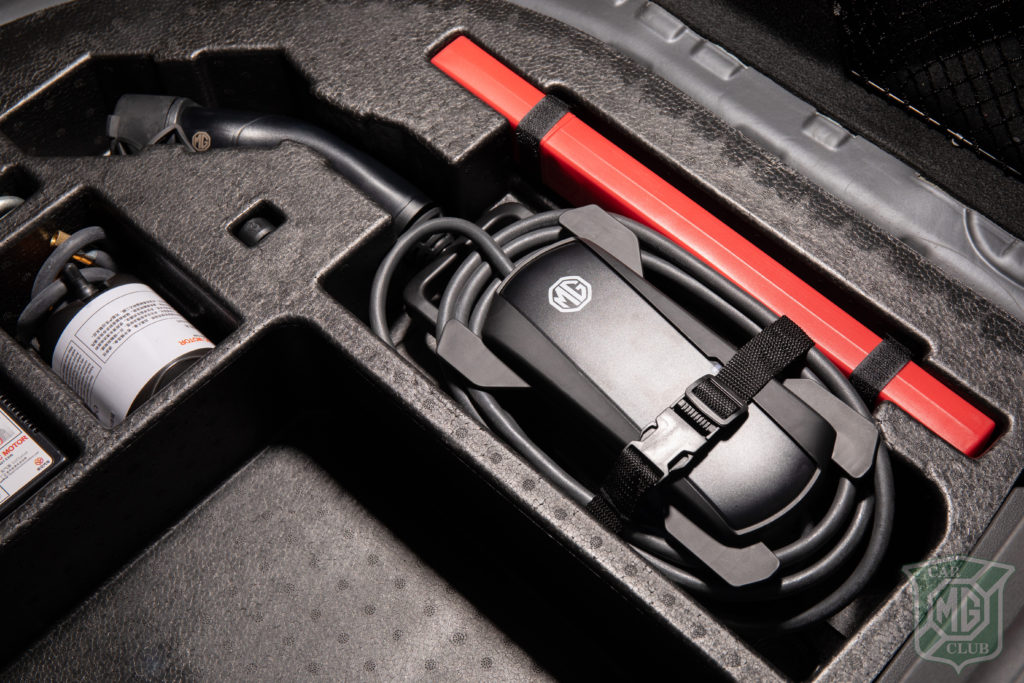
Another new addition to the EV is MG Pilot which comes as standard on both Excite and Exclusive versions and includes: Active Emergency Braking, Lane Keep Assist (which reads the road markings, holding the ZS EV safely within its lane), Adaptive Cruise Control, Intelligent Speed Limit Assist (which will read speed limit signs and will display the current speed limit to the driver) and Traffic Jam Assist (which enables the car to automatically follow the car in front at speeds below 35 mph, automatically steering, braking and accelerating within the same lane). The version I was driving also had the advantage of Blind Spot Detection and Lane Change Assist systems.
Exterior…
The only real visual difference between the models externally is the wheels; look closer, though, and you’ll notice the EV badge on the rear, chrome door handles which encompass the keyless chip and a slightly different front grille which incorporates the push panel behind which are the charging ports. Open the bonnet, though, and it’s a different story, the combustion engine I’m used to being replaced by the electric motor, with two coolant bottles, brake fluid and windscreen washing fluid bottles accessible.
The way forward…
So am I going down the Electric Avenue? There are a few things to consider. I only managed to get one insurance quote as the ZS EV has yet to be ABI (Association of British Insurer) group rated, and this quote was £135 dearer than our current petrol model, although the ZS EV has a car tax of £0, and our petrol ZS is £140 per annum. The promise of cheaper servicing on the EV is appealing, no engine oil, etc, whereas the second service on the petrol ZS can be in excess of £500.
People say the range is a limiting factor, but realistically I hardly ever make journeys over 100 miles so would it really affect me? I would just have to remember to plug it in to charge, come rain or shine! On the short eight-mile journey to work, my 1.0 ZS will return 39mpg (according to the computer) and on a good run it will see 48mpg, which for the size and weight of the vehicle I think is pretty good.
“The MG ZS 1.5 petrol engine has 141NM, the 1.0 Turbo petrol engine 160NM and the MG ZS EV an impressive 353NM of torque!”
MG Motor UK are yet to release the finance and PCP details on the MG ZS EV, although they will currently match the government electric car grant, bringing the price of the Exclusive model down to £23,495, a seriously competitive price in the electric car world; combined with the seven year or 80,000 mile warranty, you can see why they had over 1,000 orders during the first two weeks.
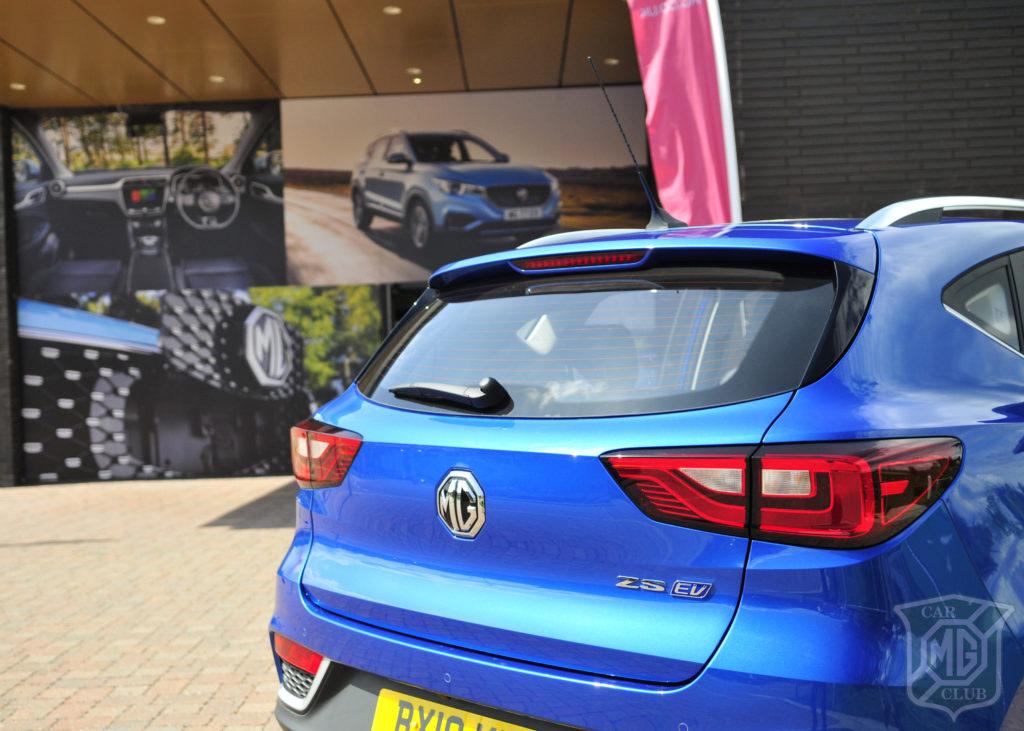
I’m really happy with my current ZS, although I could now be tempted away by the electric one when the finance packages get finalised, although I’d have to see what my wife thinks of it, or is that just another excuse to go and have another test drive…
MG ZS EV Specification
| Electric Motor Type | Synchronous Motor | |
| Battery Capacity | kWh 44.5 | |
| Maximum Power | PS (kw) 143 (105) | |
| Maximum Torque | lb ft (NM) 260 (353) | |
| 0-60mph seconds | 8.5 | |
| Maximum Speed | mph (km/h) 87 (140) | |
| Charger Connection Type | Type 2 plus CCS | |
| Estimated Charging Time (emergency use) | 3-Pin Domestic 14 hours | |
| Estimated Charging Time (7kW Wall Box) to 100% | 6 hours 30 minutes | |
| Estimated Charging Time (50kW Wall Box – CCS) to 80% | 40 minutes | |
| Electric Driving Efficiency – miles/kWh (kWh/100km) | ||
| Combined | 3.3 (18.6) | |
| City | 4.9 (12.8) | |
| Maximum Driving Range – miles (km) | ||
| Combined | 163 (262) | |
| City | 231 (372) |

 MG Car Club
MG Car Club